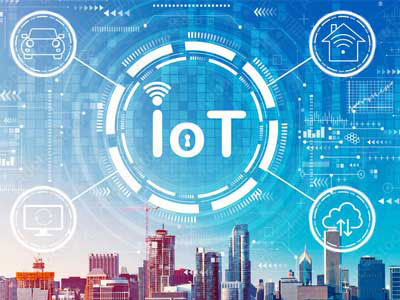Key Takeaway
IoT (Internet of Things) and AI (Artificial Intelligence) serve different purposes. IoT devices collect and share data but operate on pre-defined rules. They cannot make decisions on their own. AI, however, can process data, learn from it, and improve over time. AI applications can make better decisions based on the input data. So, while IoT connects devices and gathers data, AI analyzes this data to make intelligent decisions. Both are powerful, but together they are even more effective.
Definitions and Key Differences
Artificial Intelligence (AI) and the Internet of Things (IoT) are revolutionizing industrial applications, but they serve different purposes. AI refers to the simulation of human intelligence in machines, enabling them to learn, reason, and make decisions. In contrast, IoT connects physical devices to the internet, allowing them to collect and share data.
Understanding the differences is crucial. AI focuses on creating intelligent systems that can analyze data and make decisions. IoT emphasizes connectivity and data collection from various devices. Combining these technologies can significantly enhance industrial processes, providing more intelligent, data-driven insights and automation.

Use Cases for AI
AI has vast applications in the industrial sector. Predictive maintenance is a prime example, where AI algorithms analyze data from machinery to predict failures before they occur, reducing downtime and saving costs. By examining patterns in machine performance and identifying anomalies, AI can alert maintenance teams before a critical issue arises. This proactive approach not only enhances equipment longevity but also ensures uninterrupted production, ultimately leading to significant cost savings and improved operational efficiency.
Another significant use case is in supply chain optimization. AI can forecast demand, manage inventory levels, and optimize logistics routes. With accurate demand forecasting, companies can maintain optimal inventory levels, avoiding both shortages and excess stock. AI-driven logistics optimization ensures that routes are planned efficiently, reducing fuel consumption and delivery times. This level of efficiency ensures timely deliveries and reduces operational costs, providing a competitive edge in the market. By leveraging AI in supply chain management, companies can achieve higher customer satisfaction and better resource utilization.
Applications of IoT
IoT’s strength lies in its ability to collect real-time data from various devices and systems. In industrial settings, this translates to better monitoring and control. For example, IoT sensors can monitor machine performance, environmental conditions, and energy usage, providing valuable data to improve efficiency and reduce waste. Real-time data allows for immediate adjustments, ensuring machines operate under optimal conditions and reducing the likelihood of malfunctions. This enhances overall productivity and supports sustainability initiatives by minimizing resource consumption.
IoT also plays a critical role in asset tracking and management. By equipping assets with IoT devices, companies can track their location, usage, and condition in real time. This leads to better asset utilization and maintenance, ensuring that equipment operates at peak efficiency. For instance, IoT can alert when a machine requires servicing or if it’s being underutilized. This data-driven approach to asset management not only maximizes operational efficiency but also extends the lifespan of the equipment. Enhanced visibility into asset status and performance empowers companies to make informed decisions, optimizing their operations and reducing costs.
Synergy Between AI and IoT
When AI and IoT combine, the result is a powerful synergy that enhances industrial processes. IoT devices generate vast amounts of data, and AI analyzes this data to extract actionable insights. For example, in a smart factory, IoT sensors collect data on production processes, and AI analyzes this data to optimize workflows and reduce bottlenecks. This integration not only improves efficiency but also enhances safety and reliability in industrial applications.
Moreover, AI-driven IoT systems can automate decision-making. If a sensor detects an anomaly in a machine, AI can automatically adjust the operation or alert maintenance teams. This proactive approach ensures continuous monitoring and rapid response, minimizing downtime and preventing potential issues. This combination of AI and IoT provides a significant boost in operational efficiency and safety, making it a game-changer for industries worldwide.
Future Trends in AI and IoT
The future of AI and IoT in industrial applications looks promising. One emerging trend is the development of edge AI, where AI processing occurs directly on IoT devices. This reduces latency and bandwidth usage, enabling faster decision-making and more efficient operations. Edge AI allows real-time data processing, making it ideal for applications that require immediate responses, such as autonomous vehicles and smart grids.
Another trend is the rise of AIoT (Artificial Intelligence of Things), which combines AI and IoT to create smarter, more autonomous systems. This innovation will drive further advancements in predictive maintenance, energy management, and process optimization. For instance, AIoT can predict equipment failures before they happen, allowing for preemptive maintenance and reducing unplanned downtimes. These advancements will lead to more sustainable and efficient industrial operations, marking a significant leap forward in industrial technology.
Conclusion
In evaluating the benefits of AI and IoT, it’s clear that both technologies offer significant advantages for industrial applications. AI excels in data analysis and decision-making, while IoT provides real-time data collection and connectivity. When combined, they create a powerful synergy that enhances efficiency, reduces costs, and improves safety.
For newly joined engineers, understanding the potential of AI and IoT is crucial. Embracing these technologies can lead to innovative solutions and competitive advantages in the industry. By leveraging AI and IoT, companies can achieve smarter, more efficient, and more sustainable operations, driving future growth and success.
